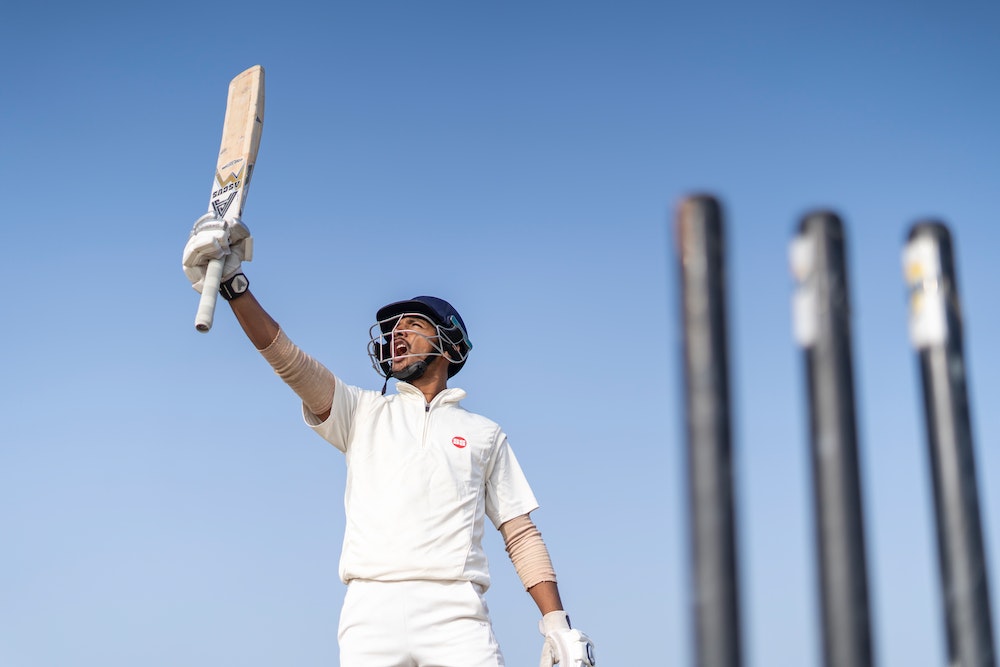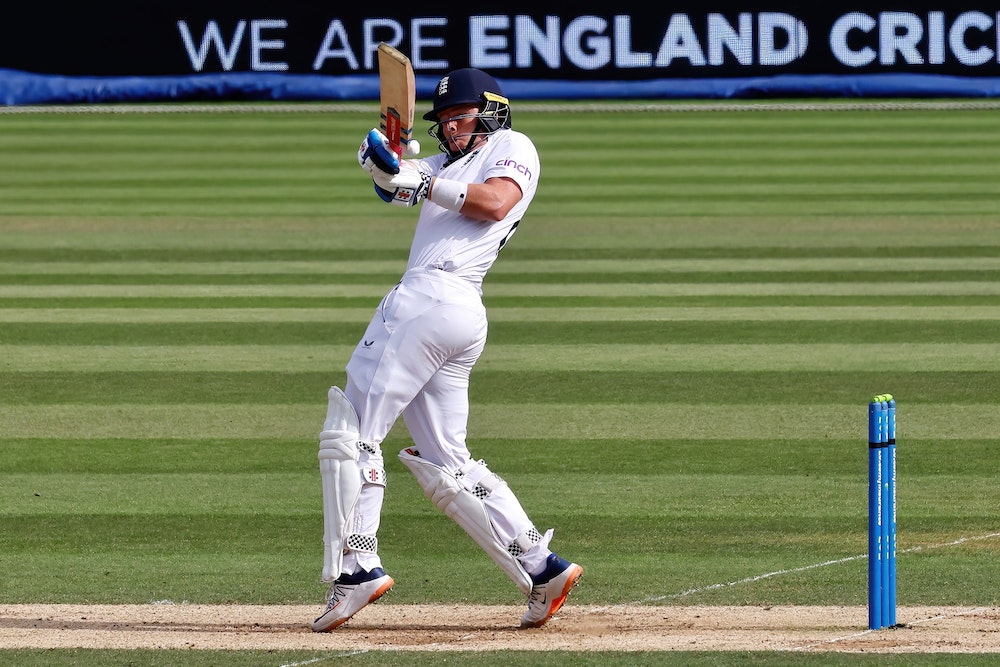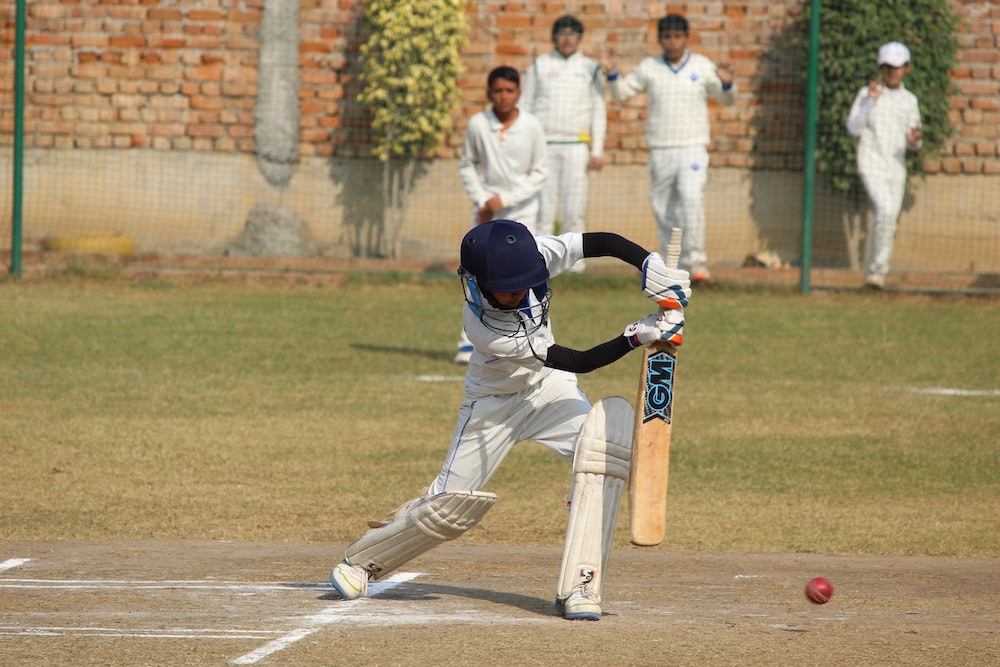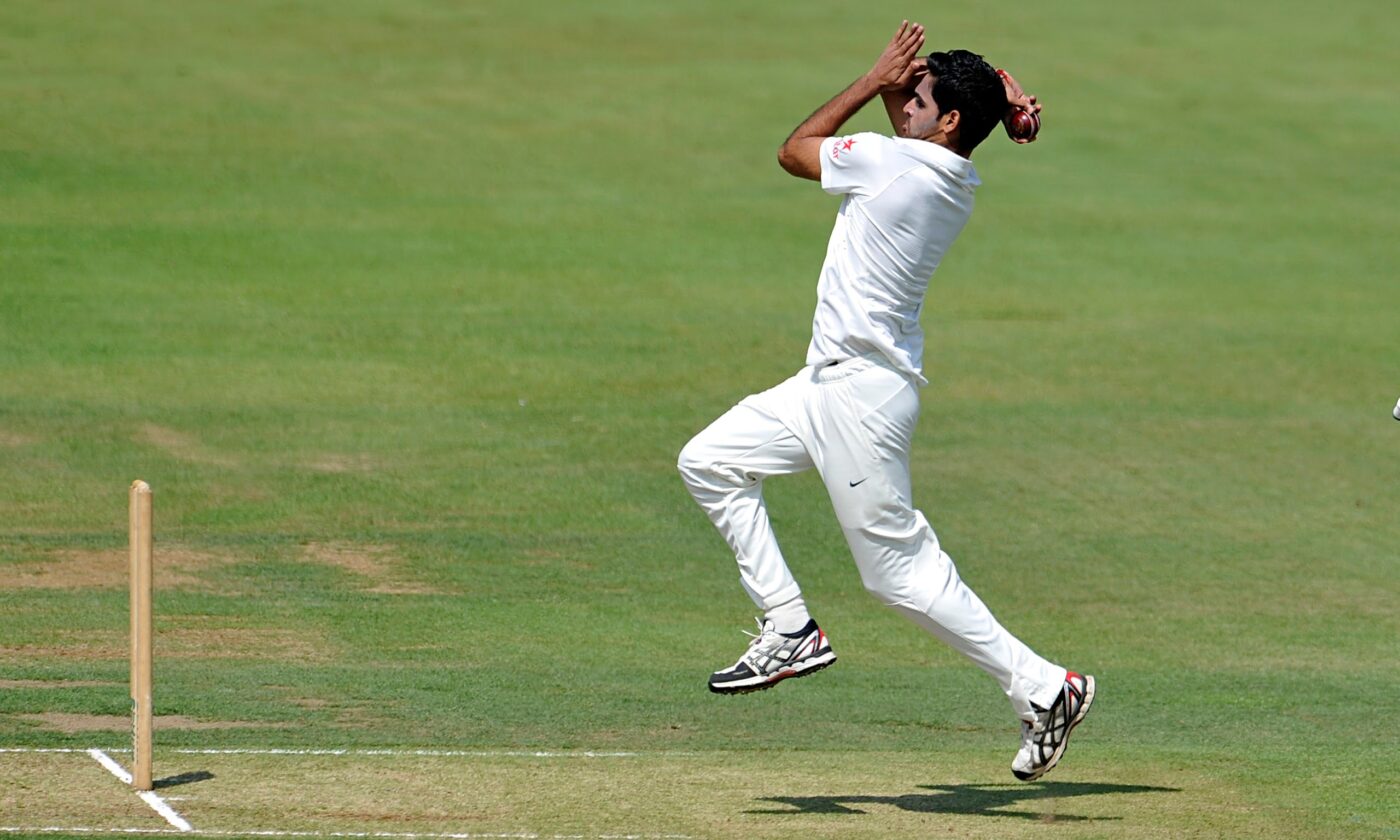
A Beginners Guide to Cricket Rules and Scoring
Cricket, often hailed as the gentleman’s game, is a popular sport steeped in tradition and strategy. For beginners, understanding the rules and scoring of cricket can seem daunting at first. With a basic knowledge of the game, you can quickly grasp its nuances and enjoy watching or playing cricket. In this beginner’s guide to cricket rules and scoring, we will delve into the various aspects of the game and shed light on its intricacies. Stay updated with the latest tips and trends about cricket on our website!
By familiarizing yourself with these key aspects of cricket, you will be well-equipped to engage with the game, enjoy its intricacies, and appreciate the rich heritage it holds. So, let’s get started on this exciting journey into the world of cricket!
The Basics of Cricket

Cricket, known as The Basics of Cricket, is a well-liked sport with a prosperous history and intricate regulations. In order to comprehend cricket, it is necessary to acquaint oneself with the fundamental aspects of the game.
1. Two teams: Cricket is played between two teams, each comprising eleven players. The objective is for one team to obtain more runs than the opposing team.
2. Pitch: The game occurs on a rectangular field referred to as the pitch. It is approximately 22 yards in length and possesses a wicket at each end.
3. Wickets: A wicket consists of three stumps and two bails. The bowler’s intention is to strike the stumps with the ball and dislodge the bails.
4. Innings: Each team has the opportunity to bat and bowl. When a team is batting, it is their innings. The batting team’s aim is to accumulate as many runs as possible.
5. Runs: Batsmen score runs when they strike the ball and successfully run between the wickets. Runs can also be obtained if the ball crosses the boundary without touching the ground, resulting in a four or six.
6. Overs: The game is divided into overs, with each over comprising of six deliveries. The bowler is changed after every over, and different bowlers can employ different styles.
7. Fielding positions: The fielding team strategically positions its players across the field. Common positions include slips, gully, mid-wicket, and deep square leg.
8. Umpires: Two umpires officiate the game, ensuring that the regulations are adhered to and making decisions on dismissals and scoring.
Comprehending these fundamental aspects of cricket, known as The Basics of Cricket, will enable you to follow and appreciate the game. Further enhance your understanding through practice, observation, and learning from experienced fans or players.
The Cricket Pitch
The cricket pitch, also known as the playing surface, is where all the action takes place in a cricket match. It is a rectangular strip of closely cut grass, approximately 22 yards long and 10 feet wide. The pitch is marked with specific lines and markings that play a significant role during the game.
One of the most important lines on the pitch is the popping crease. This crease is located 4 feet in front of the wicket on both ends of the pitch. When batting, batsmen must remain within this crease to avoid being dismissed run-out.
Another crucial line is the bowling crease, which runs parallel to the popping crease. It is positioned 8 feet, 8 inches away from it. The bowler must deliver the ball from behind the bowling crease for the delivery to be considered fair.
In addition to the creases, there are other markings such as the return creases. These indicate the point where the bowler must start their run-up before delivering the ball. Other lines, like the wide and bouncer lines, define the boundaries within which the bowler must bowl legally.
The condition of the pitch can greatly impact the movement and behavior of the ball. This, in turn, affects the pace, bounce, and spin generated by the bowler. Each pitch has its own unique characteristics, which can vary based on weather conditions and the maintenance it receives.
To enhance their performance, players need to carefully analyze the pitch and adapt their strategies accordingly. They must consider factors such as the playing surface, pitch behavior, and how these will influence their gameplay and tactics.
The Equipment

Playing cricket requires the correct equipment for a successful game. Here is a list of the key equipment:
- Bat: The batsman uses the cricket bat, made of wood (typically willow) with a flat face and a handle for grip.
- Ball: The cricket ball is hard, with a cork centre and a leather cover. It is red for test cricket and white for limited-overs matches.
- Stumps: Three vertical wooden posts called stumps are inserted into the ground, usually made of ash. Two bails rest on top, which the bowler tries to dislodge to get the batsman out.
- Protective gear: Players wear protective gear, including a helmet, gloves, pads, and a box for male players.
- Fielding equipment: Fielders use gloves and pads for protection while fielding. Wicket-keepers also use specific gloves and pads.
- Clothing: Players wear cricket whites, which consist of a shirt, trousers, and sweater, along with specialised cricket shoes.
- Extras: Additional equipment includes a bat grip, a cricket bag for carrying equipment, and a water bottle for hydration during the game.
Pro tip: Maintain and fit your equipment properly to maximise performance and safety on the field.
The Objective of the Game
The objective of the game of cricket is to score more runs than the opposing team. Each team takes turns batting and fielding. The batting team’s main goal is to accumulate as many runs as possible. They can score runs by hitting the ball and running between the wickets or by hitting the ball over the boundary for a four or a six, which will earn them four or six runs respectively. On the other hand, the fielding team aims to dismiss the batsmen and limit the number of runs scored.
They can do this by catching the ball after it has been hit in the air, hitting the stumps with the ball before the batsman reaches the crease, or by trapping the batsman in front of the wicket, which is known as a leg before wicket (LBW) dismissal. Both teams employ different strategies and tactics to achieve their objectives. Cricket is a sport that tests skill, teamwork, and strategy, creating an exciting competition for players and fans alike.
Originating in England in the 16th century, cricket has grown to be a popular sport worldwide, with the objective of scoring more runs than the opposing team remaining unchanged despite the evolution of rules and format.
The Playing Field

The playing field in cricket is of great importance. It encompasses several key elements and dimensions that contribute to the game’s dynamics and strategy.
1. Pitch: At the core of the field lies the pitch, which serves as the central area where most of the action takes place. This rectangular strip of grass spans 22 yards in length and divides the field into two halves, setting the stage for thrilling encounters between teams.
2. Crease: Situated at each end of the pitch, the crease is marked with precision. It consists of two distinctive sets of lines – the popping crease and the bowling crease. Batsmen position themselves behind the popping crease while bowlers deliver the ball from behind the bowling crease, forming an integral part of the game’s mechanics.
3. Boundaries: To contain the playing field, boundary ropes or fences serve as enclosures. The distance between the pitch and the boundary can vary, typically spanning from 65 to 90 metres, depending on the size of the ground. These boundaries have a significant impact on scoring runs and setting fielding strategies.
4. Inner Circle: Within the playing field, a notable area is demarcated by a circle with a radius of approximately 30 yards. This restricted region, known as the inner circle, imposes certain fielding limitations during specific phases of the game. It amplifies the strategic elements involved in cricket and adds further depth to player roles.
5. Outfield: Beyond the inner circle lies the outfield, an extensive area that extends towards the boundary. This space, typically covered with grass, exhibits variations in texture and condition, introducing additional challenges for fielders and adding a distinct dimension to the game’s dynamics.
6. Fielding Positions: To optimize defensive tactics, players are strategically assigned various positions based on the situation and the type of bowler. These positions include slips, gully, point, cover, mid-off, mid-on, square leg, fine leg, and deep fielders. Each role caters to specific aspects of the game and contributes to the overall team strategy.
Understanding the dimensions and layout of the playing field is crucial for both effective player roles and spectator comprehension. By grasping the intricacies of the field, enthusiasts can truly appreciate the strategic depth and extraordinary skills exhibited in the game of cricket.
The Cricket Innings
The cricket innings is a crucial part of the game. Each team gets the opportunity to score runs and dismiss the opposition. In cricket, there are two innings per match, with each team taking turns to bat and bowl.
During an innings, the batting team aims to score as many runs as possible. They send two batsmen to the pitch, and they take turns to face the deliveries from the opposing bowlers. The batsmen score runs by hitting the ball and running back and forth between the two ends of the pitch. Each completed run adds to the team’s total score.
The innings is divided into overs, with each over consisting of six deliveries. The batting team strives to maintain a good run rate while avoiding losing wickets, as each wicket reduces the number of batsmen left to score runs.
The number of overs in an innings can vary depending on the game format. In limited-overs matches, each team is usually allocated a specific number of overs, such as 50 overs in One-Day Internationals. In Test matches, each team has two innings, and there is no specific limit on the number of overs.
At the end of the innings, the batting team’s total score determines the target for the opposing team in their innings. If all of the batting team’s wickets are dismissed before the allocated overs, it is known as a “completed innings.”
The cricket innings is a critical phase of the game, where teams aim to score runs and set a challenging target for their opponents. It requires strategic thinking, precise batting skills, and effective teamwork to achieve success.
The Role of the Batsmen

The role of the batsmen in cricket is of utmost importance in determining the success of the team. They bear the responsibility of scoring runs and forging partnerships with their fellow batsmen.
The main objective of the batsmen is to accumulate runs by making contact with the ball and swiftly running between the wickets. They also have the opportunity to score boundaries by striking the ball along the ground for four runs or over the ropes for six runs. Batsmen work together in pairs and strive to form effective partnerships by taking turns to strike the ball and sharing the burden of scoring runs.
In order to set a challenging target, they need to assess the match situation, the prevailing conditions, and the strategies employed by the opposition’s bowlers. Batsmen encounter various styles of bowling and therefore must decode the bowler’s intentions, adjust their footwork accordingly, and execute the suitable shots.
Possessing solid technique, unwavering concentration, and making prudent shot selections are the keys to excellence for batsmen in their role. They must stay mindful of the game situation, adapt to different bowlers and conditions, and make astute tactical decisions.
The role of the batsmen holds immense significance in determining the final outcome of the match, thus aspiring cricketers ought to dedicate themselves to refining their batting skills and deepening their understanding of the game in order to thrive in this critical role.
The Role of the Bowlers
The role of the bowlers in cricket is crucial for the success of their team. They have the responsibility of dismissing the opposing team’s batsmen and restricting the number of runs scored. Here are some key aspects to consider regarding the role of the bowlers:
1. Taking wickets: Bowlers strive to take wickets by bowling accurately and strategically. Their aim is to hit the stumps or induce mistakes from the batsmen leading to dismissal.
2. Bowling variations: Bowlers employ various types of deliveries such as fast bowling, spin bowling, and swing bowling to deceive the batsmen and create opportunities for taking wickets. Mastering these variations requires precise control and skill.
3. Building pressure: Bowlers maintain a consistent line and length to create pressure on the batsmen. By bowling dot balls and tight overs, they force the batsmen to make errors or take unnecessary risks.
4. Field placements: Bowlers work in collaboration with the captain to strategically set field placements. The objective is to trap the batsmen into playing shots that can result in dismissal or restrict scoring opportunities.
5. Team support: Bowlers communicate and encourage each other on the field. They function as a unit to form partnerships and exert pressure on the batsmen.
Throughout the history of cricket, bowlers have played a significant role in determining match outcomes. Legendary bowlers such as Wasim Akram, Glenn McGrath, and Muttiah Muralitharan have achieved remarkable success by taking numerous wickets and assisting their teams in winning matches. The role of bowlers continues to be pivotal in modern-day cricket, with teams relying on their skills to outperform opponents.
The Role of the Wicket-keeper

The wicket-keeper in cricket plays a crucial role in both the defensive and aggressive aspects of the game. They have numerous important obligations and tasks:
- Catching: The wicket-keeper is positioned behind the wicket and catches the ball, attempting to dismiss batsmen by catching deflections from the bat or edges.
- Stumping: The wicket-keeper can dismiss a batsman by stumping, removing the bails while the batsman is out of their crease. This requires quick reflexes and decision-making.
- Run-outs: The wicket-keeper actively takes part in run-out opportunities, collecting the ball and throwing it accurately towards the stumps to achieve a run-out.
- Communication: The wicket-keeper acts as the captain’s spokesperson on the field, providing insights on the pitch, offering field placement advice, and communicating with bowlers and fielders for efficient teamwork.
- Team motivation: The wicket-keeper’s enthusiasm and proactive presence on the field boost the team’s morale, serving as motivators and maintaining high energy levels.
Fact: Mark Boucher from South Africa holds the record for the most dismissals by a wicket-keeper in Test cricket, with 555 dismissals in 146 matches.
The Role of the Fielders
Fielders play a crucial role in the game of cricket, aiming to impede the batsmen from scoring runs and taking wickets. The role of fielders encompasses several key aspects that are vital to the game.
One important aspect is the positioning of fielders on the field. They are strategically placed in various positions such as wicketkeeper, slip, gully, point, cover, mid-off, mid-on, square leg, fine leg, and deep extra cover. Each position has a specific purpose, and it is important for fielders to be aware of their responsibilities in those positions.
Another important aspect is the ability to chase and retrieve the ball. Fielders must have agility and quick reflexes to anticipate the direction of the shot and react swiftly to minimize the number of runs scored.
Catching the ball in the air is another key skill for fielders. It requires good hand-eye coordination, reflexes, and focus. Dropping a catch can have significant consequences for the team, leading to the loss of valuable runs and wickets.
Fielders also employ diving and sliding techniques to prevent the ball from reaching the boundary. These actions are crucial in saving runs and putting pressure on the batsmen.
In addition, a strong throwing arm is important for fielders, as accurate throws are essential for run-outs. Fielders must be able to return the ball quickly and hit the stumps to dismiss batsmen or prevent quick singles.
Fielders play a crucial role in supporting the bowlers. They provide energy and enthusiasm, boosting the confidence of the bowlers and contributing to the overall performance of the team.
Through their athleticism, strategic positioning, and teamwork, fielders play a significant role in the success of a cricket team.
The Bowling Action

The bowling technique in cricket is of vital importance, especially the bowling action. It dictates how the ball is delivered by the bowler and involves precise movements and methods that must be executed when releasing the ball towards the batsman. Here are some key factors to consider:
- Alignment: The bowler’s body should be properly aligned for an effective delivery. The feet should be shoulder-width apart, and the non-bowling arm should be raised for balance.
- Approach: The run-up towards the bowling crease is significant. Bowlers have different lengths of run-ups depending on their comfort and desired speed.
- Arm Position: As the bowler reaches the crease, the bowling arm should be raised and perpendicular to the ground to create an optimal release angle.
- Delivery: The wrist plays a crucial role in ball release. Bowlers can choose between wrist spin, finger spin, or pace bowling techniques based on their style and desired outcome.
- Follow-through: After releasing the ball, the bowler should maintain a smooth follow-through by extending the bowling arm towards the batsman and landing on the front foot.
- Fair Bowling Action: Bowlers must adhere to rules and regulations set by the ICC to ensure fair play, including restrictions on the degree of arm bending.
Remember, mastering the bowling technique requires practice and skill. By analyzing and refining your technique, you can enhance your bowling abilities and become a formidable cricketer.
The Cricket Scoring System
The Cricket Scoring System determines the outcome of each match. Here are the key elements:
1. Runs: Batsmen score runs by running between the wickets, hitting boundaries, or clearing the boundary ropes for a six.
2. Extras: Extras are additional runs conceded by the bowling team, such as wides and no-balls.
3. Dismissals: Batsmen can be dismissed in various ways, including being caught, bowled, stumped, run out, or leg before wicket (LBW).
4. Bowling Figures: The performance of bowlers is recorded. It includes the number of overs bowled, maidens, runs conceded, and wickets taken.
5. Team Total: The team’s total score is the sum of the individual batsmen’s runs, extras, and any penalties applied. The team with the higher total wins.
The cricket scoring system provides a comprehensive record of each player’s contribution and the overall performance of the teams. It enables analysis, comparison of performances, and determination of success. The accuracy and attention to detail in recording the scoring ensure fair play and maintain the integrity of the game.
How Are Runs Scored in Cricket?
In cricket, runs are scored when the batsmen hit the ball and complete a run between the wickets. Let’s explore the various ways in which runs are scored in cricket.
1. By hitting the ball: When the batsman strikes the ball and it crosses the boundary rope without making contact with the ground, it is known as a “boundary” and awards the batting team 4 runs. If the ball bounces or touches a fielder before crossing the rope, it is considered a “six” and grants the batting team 6 runs.
2. By running between the wickets: The batsmen can accumulate runs by running between the two wickets. When they successfully cross and complete a run, they are credited with 1 run. They can keep on running and add more runs unless the ball is returned to the fielder or reaches the boundary.
3. Extras: Apart from hitting and running, runs can also be awarded as “extras.” This includes byes, leg byes, wides, and no balls. Byes and leg byes are runs scored when the ball bypasses the batsman without making any contact with their bat or body. Wides are given when the bowled ball is outside the batting crease. On the other hand, no balls are awarded for illegal deliveries that are not considered legitimate balls.
4. Overthrows: In certain situations, if the fielders attempt to throw the ball back to the stumps but miss, resulting in the ball going beyond the boundary rope, additional runs can be scored by the batsmen. This occurrence is known as “overthrows.”
Fact: A remarkable record was set by Rohit Sharma of India against Sri Lanka in 2014, where he achieved the highest individual score ever made in a One-Day International (ODI) cricket match by scoring 264 runs.
So, there you have it! Now you know precisely how runs are scored in cricket.
What Are Extras in Cricket?
Extras in cricket are additional runs scored by the batting team that are not attributed to any batsman. They can be classified into different types:
- Byes: Byes are runs scored when the batsman misses the ball, and the wicketkeeper fails to catch it, allowing the batsmen to take runs.
- Leg byes: Leg byes are runs awarded if the ball hits the batsman’s body and they are able to take runs. The ball must not hit the batsman’s bat first.
- No balls: A delivery is considered a no ball if the bowler oversteps the front line of the bowling crease, throws the ball above waist height, or delivers a full toss above waist height. In addition to the extra run awarded, the batsman cannot be dismissed on a no ball unless they are run out or stumped. The batting team also receives a “free hit” after a no ball, where the batsman cannot be dismissed except by a run out.
- Wide balls: Wide balls are called if the ball is delivered too wide of the batsman and is outside the reach of a normal cricket shot. In limited-overs cricket, wides are treated as extra balls bowled.
- Penalty runs: Penalty runs are awarded to the batting team if the fielding team commits serious offences, such as deliberate time-wasting or tampering with the ball.
The extras contribute to the total score of the batting team but are not attributed to any individual batsman.
What Is the Role of Umpires in Cricket?
In cricket, umpires play a crucial role in ensuring fair play and making important decisions during a match. Their primary responsibility is to enforce the laws of the game and ensure a fair and impartial match.
Umpires determine whether a batsman is out or not and make decisions on appeals made by the fielding team, incorporating their observations. They also conduct the match by managing the flow of play, controlling the timing of the match, and ensuring that players adhere to the rules.
Umpires oversee fair play by monitoring player conduct and enforcing disciplinary measures for unsporting behavior or rule violations. They are also responsible for keeping track of the number of runs, wickets, and penalty runs awarded during the match. In some matches, a third umpire reviews close decisions using technology, assisting the on-field umpires in making accurate decisions.
Umpires in cricket uphold the integrity of the game and ensure a fair experience for all. Their decisions significantly impact the outcome of a match, and their expertise and impartiality are highly valued.
For more information on cricket rules and scoring, please refer to the Beginner’s Guide to Cricket Rules and Scoring.
What Is the Duckworth-Lewis Method?
The Duckworth-Lewis Method, also known as the DLS Method or simply Duckworth-Lewis, is a mathematical formula utilized in cricket to determine the target score for the team batting second in matches affected by rain. This method ensures a fair and precise outcome by taking into account the number of remaining overs, the number of lost wickets, and the scoring rate of the team batting first.
Invented by Frank Duckworth and Tony Lewis in the 1990s, the Duckworth-Lewis Method has gained widespread adoption by cricketing authorities worldwide. It is specifically used in One-Day Internationals and Twenty20 matches.
The formula itself is complex, as it calculates the par score based on the resources available to the team batting first, namely the number of overs and wickets. The target score for the team batting second is then adjusted according to the revised target determined by the Duckworth-Lewis Method.
One of the key advantages of the Duckworth-Lewis Method is that it guarantees fair results in rain-affected matches. By considering game conditions and allowing for equitable outcomes even with reduced overs, it ensures that both teams have an equal opportunity to win.
When rain disrupts a cricket match, the Duckworth-Lewis Method comes into play by establishing the revised target for the team batting second. This not only facilitates the continuation of play but also provides both teams with a fair chance of victory.
The Duckworth-Lewis Method plays a crucial role in ensuring fairness and accuracy in rain-affected cricket matches.
What Are Boundary and Sixes in Cricket?
Boundaries and sixes are essential components of cricket. They play a vital role in scoring runs for the batting team. A boundary occurs when the ball is struck and crosses the boundary line without bouncing or touching any fielder. On the other hand, a six is earned when the ball is hit over the boundary without making contact with the ground.
Both boundaries and sixes facilitate the rapid accumulation of runs for the batting team. When a boundary is scored, four runs are added to the team’s total. Conversely, a six contributes six runs. These scoring shots hold great significance in shorter formats of the game, such as Twenty20 cricket.
To successfully score a boundary or a six, the batsman must possess good timing and strike the ball with sufficient power to surpass the fielders and cross the boundary. Consistently achieving this requires a combination of skill and technique. Batsmen often employ a range of shots and strategies, including lofted shots, pull shots, and drives, to maximize their opportunities for scoring these significant runs.
Boundaries and sixes generate thrilling moments in cricket matches, greatly impacting the overall outcome of the game. These moments are cherished by the crowd and are frequently met with applause from spectators. Such shots elegantly showcase a batsman’s talent and have the potential to shift the momentum in favor of the batting team.
What Is the Difference between Test, One-Day International, and Twenty20 Cricket Formats?
Test, One-Day International, and Twenty20 (T20) are three cricket formats played internationally. Each format has its own unique characteristics and rules.
To understand the difference between these formats, let’s compare them in a table:
| Format | Duration | Innings | Overs | Player Restrictions | Pace of the Game | Purpose |
| Test Cricket | Up to 5 days | 2 | Unlimited (typically 90-120 overs per day) | No restrictions | Slow-paced | To assess player skill and endurance |
| One-Day International (ODI) | One day (50 overs per side) | 1 | 50 overs per side | Fielding restrictions during the first 10 overs | Moderate-paced | To balance skill and entertainment within a limited timeframe |
| Twenty20 (T20) | Approximately 3 hours | 1 | 20 overs per side | Strict fielding restrictions for the first 6 overs | Fast-paced | To maximize excitement and quick results |
In Test cricket, matches can last up to 5 days, allowing teams to demonstrate their skills and strategy. One-Day Internationals are played in a single day with 50 overs per side, striking a balance between skill and time constraints. T20 matches are the shortest, lasting around 3 hours, and are designed for fast-paced excitement.
Understanding these formats is crucial for both players and fans to appreciate and enjoy the game. Whether you prefer the traditional and strategic nature of Test cricket, the balanced challenges of One-Day Internationals, or the thrilling pace of T20 matches, each format offers a unique cricketing experience. So why not have a go at watching or playing different formats to discover which one suits you best?
In a real-life example, my friend Sarah attended a T20 match with me. Despite being new to cricket, she quickly grew to appreciate the excitement and began cheering for her favourite team. Sarah‘s experience highlights how cricket formats can engage and entertain even those new to the sport.
What Are DRS and Third Umpire in Cricket?
DRS and Third Umpire in Cricket, also known as the Decision Review System, are vital technologies utilized to assist umpires in making precise decisions on the field. Teams have the opportunity to challenge the decisions made by the on-field umpires and request a review using this technology. Whether it is related to catches, lbw appeals, or other dismissals, the DRS provides a way to contest these decisions.
The third umpire is responsible for overseeing the entire DRS process. Positioned away from the field, they have access to multiple camera angles and advanced technology, enabling them to thoroughly review the on-field decisions. After assessing the footage, the third umpire communicates their decision to the on-field umpire, who ultimately makes the final ruling based on this input.
Both the DRS and third umpire perform an essential role in ensuring accurate decision-making in cricket. By utilizing advanced technology, they eliminate errors and promote fairness in the game. To gain a better understanding of these technologies, it is recommended to watch matches where the DRS and third umpire are implemented. By observing how they are employed in different game situations, you can witness their significant impact on the overall outcome. Embrace the excitement of cricket and continue expanding your knowledge of the rules and scoring.
What Is LBW in Cricket?
Leg Before Wicket (LBW) is a rule in cricket that results in the dismissal of a batsman. When a bowler delivers the ball and it hits the batsman’s leg before the bat, and the umpire believes that it would have hit the stumps, the batsman can be given out LBW. This rule ensures fairness and prevents batsmen from obstructing the ball with their legs.”
To determine what is LBW in cricket, the umpire considers several factors. The ball must hit the batsman’s leg below the knee roll of the pads. Then, the umpire assesses if the ball would have hit the stumps without hitting the batsman’s leg. If so, the batsman is given out LBW.
LBW is a complex rule in cricket, often subject to interpretation. Batsmen should be aware of their leg position and strive to hit the ball with their bat to avoid being given out LBW. Bowlers aim to deliver the ball in a way that increases their chances of getting a batsman out LBW.
As you explore the world of cricket, take the time to understand the intricacies of LBW and its impact on match outcomes. Practise batting and be mindful of your leg position to minimise the risk of being given out LBW. Enjoy the thrill of the sport as you learn about cricket rules and scoring.”
How Is a Cricket Match Won?
To triumph in a cricket clash and win a cricket match, a squad should outscore their adversaries within a specified number of overs or innings. Here’s the method by which a cricket game is attained:
1. Amassing runs: Each team takes turns at batting and accumulating runs. The team with the greatest overall runs emerges victorious. Runs are achieved by striking the ball and running between the wickets or hitting boundaries.
2. Dismissing batsmen: The bowling team strives to eliminate the opposing batsmen. This can be accomplished by catching the ball struck by the batsman, hitting the wickets with the ball, or getting the batsman out through lbw (leg before wicket) if the ball strikes the batsman’s leg prior to striking the wicket.
3. Restricting the adversaries’ runs: Whilst bowling, teams aim to restrict the number of runs scored by the opposition. This can be accomplished by bowling precisely, varying the pace, and employing different bowling techniques to perplex the batsman.
4. Obtaining all the wickets: If a team succeeds in dismissing all the opposition batsmen, they secure victory. This is referred to as bowling out the opposing team.
5. Winning based on the number of innings: In certain cricket formats, such as Test matches, a team must dismiss their opponents twice and score more runs in their own innings to emerge triumphant.
Pro-tip: In closely contested matches, maintaining concentration and remaining composed under pressure can have a significant impact on securing a triumph. Cultivate mental resiliency and make strategic decisions to provide your team with the best opportunity for victory.
Cricket Etiquette and Spirit of the Game
Cricket Etiquette and Spirit of the Game are crucial for maintaining fair play and upholding the integrity of cricket. It is essential for players to demonstrate respect for umpires by accepting their decisions without argument, as umpires are responsible for ensuring a level playing field. Sportsmanship should be displayed by players through fair play, integrity, and respect towards opponents, teammates, and officials. The game of cricket should always be played in the correct spirit.
Respect for the opposition is also paramount, both on and off the field, and players should avoid any disrespectful behavior or sledging. Adherence to the rules is a must, and players must refrain from cheating or tampering with the ball. In the face of defeat, players should accept it gracefully and congratulate the winning team, showing respect towards the opposition.
Preserving traditions holds significance in cricket as well. Players should respect and uphold traditions like shaking hands at the end of the match and wearing appropriate attire. Maintaining a positive attitude is crucial, as players should support their teammates, encourage fair play, and remain composed during intense moments.
Professional players, in particular, should strive to be positive role models, promoting good values and sportsmanship to foster a healthy cricketing culture. By embracing cricket etiquette and the spirit of the game, players contribute to creating an environment of fair competition, respect, and enjoyment for all involved.
Frequently Asked Questions
What are the basic cricket rules and scoring?
Cricket is a universal sport played with two teams of 11 players each. The game is played with a round ball, a bat, and wickets. The objective is to score a higher run score than the opposing team by hitting the ball and running between the batting strip and the bowler. Runs can also be scored by hitting the ball to the boundary for four points or hitting it over the boundary for six points.
What are the different types of cricket matches?
There are three main types of cricket matches: Test Cricket, One Day matches, and Twenty20 matches. Test matches can last for up to five days with two innings per team. One Day matches have a limited overs format and are completed in a single day. Twenty20 matches are the shortest format of the game, completed in a few hours.
What happens if a batsman gets out?
A batsman can get out in several ways, including being bowled, caught, LBW (leg before wicket), run-out, or stumped. When a batsman is out, they have to leave the field and are replaced by another player from their team.
Can cricket matches end in a draw?
Yes, cricket matches can end in a draw. This can happen due to weather conditions or if the last bowling team fails to get all the opposing batsmen out. In Test matches played over five days, if both teams have not completed their innings and there is not enough time left, the match can end in a draw.
What is the importance of protective gear in cricket?
Protective gear is important in cricket due to the high speed at which balls are bowled. Batsmen wear helmets, pads, gloves, and other protective equipment to minimize the risk of injury from the hard ball. Bowlers also wear protective gear to protect themselves.
What is the Cricket World Cup?
The Cricket World Cup is considered the pinnacle of the international game. It is a major tournament where teams from different countries compete to win the title. The tournament is held every four years and attracts ardent supporters from around the world.





